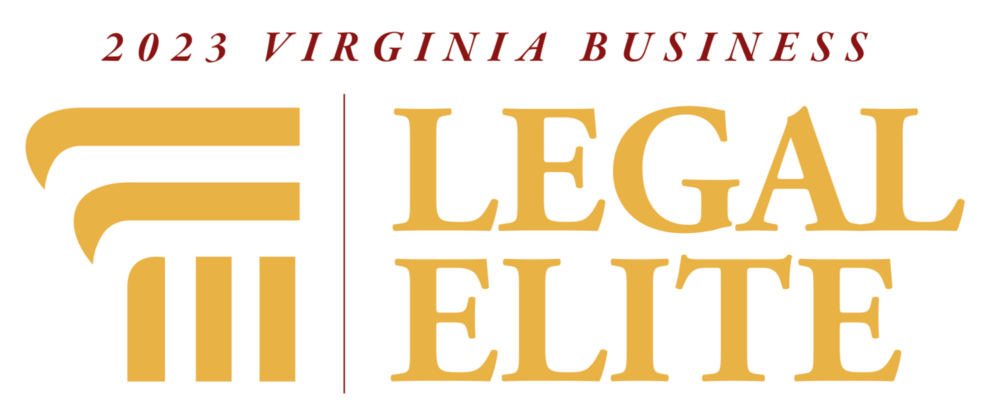Summary
The Federal Circuit’s decision earlier this week in Niazi Licensing Corp. v. St. Jude Medical addresses several validity and infringement issues. But the Court’s analysis of the indefiniteness issue is of particular interest to patent prosecutors, both for its useful review of the general principles of indefiniteness and for its application of those principles to the specific “claim terms of degree,” i.e., “descriptive words,” that were in dispute.
I. Background
The patented technology involves resynchronization therapy for treatment of congestive heart failure. The patent specification explains that it is “difficult to pass a lead” into the relevant sections of the heart, using traditional catheters. The inventor therefore created a double catheter, i.e., “a catheter comprising an outer and inner catheter for cannulating the coronary sinus ‘without significant manipulation.’”
Representative claim 1 recites:
A double catheter, comprising:
an outer, resilient catheter having shape memory and a hook shaped distal end configured for cannulation of the coronary sinus with at least one curved bend;
an inner, pliable catheter slidably disposed in the outer catheter and of greater length than the outer catheter so that a distal end portion of the inner catheter can be extended or retracted from a distal end opening of the outer catheter to vary the overall length of the double catheter, the inner catheter having an internal lumen configured for the introduction of contrast media and a pacing lead into the coronary sinus; and
a mechanism operable from the proximal end of the outer catheter for changing the curvature of the distal end of the outer catheter.
(Emphasis added). The trial judge found that this claim was invalid because the claim terms “resilient” and “pliable” were indefinite.
On appeal the Federal Circuit reversed.
II. Federal Circuit’s Analysis
The Court began its analysis with the statutory requirement for patentability that a patent specification “conclude with one or more claims particularly pointing out and distinctly claiming the subject matter which the applicant regards as his invention.” Citing Nautilus, Inc. v. Biosig Instruments, Inc., 572 U.S. 898, 901 (2014), it explained that a claim is indefinite if it “fail[s] to inform, with reasonable certainty, those skilled in the art about the scope of the invention” when “read in light of the specification” and “prosecution history.” Although language has “inherent limitations,” competitors and the public must have “clear notice of what is claimed.”
Turning to the caselaw, the Federal Circuit explained that “a patentee need not define his invention with mathematical precision in order to comply with the definiteness requirement.” Guangdong Alison Hi-Tech Co. v. Int’l Trade Comm’n, 936 F.3d 1353, 1359 (Fed. Cir. 2019). “Claim language employing terms of degree has long been found definite where it provided enough certainty to one of skill in the art when read in the context of the invention.” Interval Licensing LLC v. AOL, Inc., 766 F.3d 1364, 1370 (Fed. Cir. 2014).
Claim terms of degree might give a broader claim scope than a claim defined mathematically, but such a claim term is not indefinite merely because it is broad. The Court then stepped through the holdings of four earlier decisions.
(1) Sonix Technologies v. Publications Int’l, 844 F.3d 1370 (Fed. Cir. 2017)
The claims recited the phrase “visually negligible” for “systems and methods for using a graphical indicator (like a barcode) to encode information on the surface of an object, the purported improvement over the prior art being a ‘visually negligible’ graphical indicator.” Although the phrase was one of degree, the claim also recited “an objective baseline through which to interpret the claims,” i.e., whether it could be seen by a normal human eye. And the specification disclosed “objective boundaries, including exemplary designs and specific examples of visually negligible graphical indicators as well as a specific requirement that the indicator be negligible to human eyes.” Finally, “the examiner understood this phrase throughout prosecution, as did both parties’ experts during the course of litigation.”
(2) Enzo Biochem, Inc. v. Applera Corp., 599 F.3d 1325 (Fed. Cir. 2010)
The claims included the phrase “not interfering substantially” and required that a linking group in a chemical compound did substantially interfere with the ability of the compound to hybridize with a nucleic acid. Although the claims did not define “not interfering substantially” with mathematical precision, there were “guideposts” for one skilled in the art to determine the scope of the claims, including dependent claims, the specification, and the prosecution history that contained examples of linking groups that would not interfere substantially with hybridization.
(3) Datamize, LLC v. Plumtree Software, Inc., 417 F.3d 1342 (Fed. Cir. 2005)
The claim was “purely subjective” in defining the recited interface screen with the term “aesthetically pleasing,” and therefore invalid as being directed to a “look and feel.” “The scope of the claim changed depending on a person’s subjective determination as to whether the interface screen was ‘aesthetically pleasing.’” Plus, there was nothing in the intrinsic record providing a “standard for measuring the scope of the phrase.”
(4) Intellectual Ventures I, LLC v. T-Mobile USA, Inc., 902 F.3d 1372 (Fed. Cir. 2018)
The claim phrase “QoS requirements” was “purely subjective” because one skilled in the art could not understand the claim’s scope with reasonable certainty. The specification described “QoS requirements” as being “defined by what network performance characteristic is most important to a particular user” and as “a relative term, finding different meanings for different users.” The claims were invalid as indefinite because the term was “purely subjective” and depended “on the unpredictable vagaries of any one person’s opinion.”
Turning to the present case, the Federal Circuit concluded from the intrinsic and extrinsic evidence that the terms “resilient” and “pliable” are broad, but not uncertain.
The claim language reciting “an outer, resilient catheter having shape memory” itself indicates the meaning of the term: the outer catheter must have “shape memory,” (claim 1) and “sufficient stiffness” (claim 13). Several dependent claims further suggest the meaning of “resilient” by reciting examples of resilient material from which the outer catheter might be produced, e.g., claims 16 and 21 reciting that “the outer catheter is made of a braided silastic.” (One wonders whether the Court’s use of wording in dependent claims to define terms in the independent claim renders the dependent claims invalid for failing to further limit the scope of the claim on which they depend, or whether that use runs afoul of the principle of claim differentiation).
The patent specification is similar, disclosing that the outer catheter has a “’braided design’ … and is made of materials like silastic or similar materials such that the outer catheter has ‘sufficient shape memory to return to its original shape when undistorted.’” Resilience also provides “torque control and stiffness.” The Federal Circuit therefore inferred that “a person of ordinary skill reading the claims and written description would know of exemplary materials that can be used to make a resilient outer catheter, i.e., one that has shape memory and stiffness such that it can return to its original shape.”
Regarding the term “pliable,” the Federal Circuit noted that the claim recites “an inner, pliable catheter slidably disposed in the outer catheter.” Though this description is briefer than the one for “resilient,” the specification discloses several examples of a “pliable” inner catheter, for instance, it “is constructed of a more pliable, soft material such as silicone” and “has no longitudinal braiding, which makes it extremely flexible and able to conform to various shapes.” The Court concluded that the specification discloses “exemplary material that can be used to make a pliable inner catheter, explaining that the inner catheter is more flexible than the outer.”
Taken as a whole, we conclude that the intrinsic record “is sufficient to dispose of” the indefiniteness issues as to the terms “resilient” and “pliable.” Guangdong, 936 F.3d at 1361. The intrinsic record provides objective boundaries by which a skilled artisan could determine the scope of the claims. That puts this case in line with our decisions in Sonix Technologies and Enzo Biochem, where we held that examples in the written description helped provide sufficient guidance to render the claims not invalid as indefinite. The terms “resilient” and “pliable” are not purely subjective terms like those in Datamize, Interval Licensing, and Intellectual Ventures I, resulting in a variable claim scope depending on the particular eye of any one observer.
The Federal Circuit additionally identified certain extrinsic evidence, specifically dictionary definitions that confirm that the terms “resilient” and “pliable’ would have had broad but understandable meaning to one skilled in the art.
III. Conclusion
The Federal Circuit recognizes that some inventions can often be defined only by “claim terms of degree.” Such terms are acceptable, however, where the specification or the prosecution history, or perhaps even the claims themselves, guide one skilled in the art to an understanding of their meaning. Applicants must note such terms in their claims and include in the intrinsic record examples or additional description to give those terms meaning.









